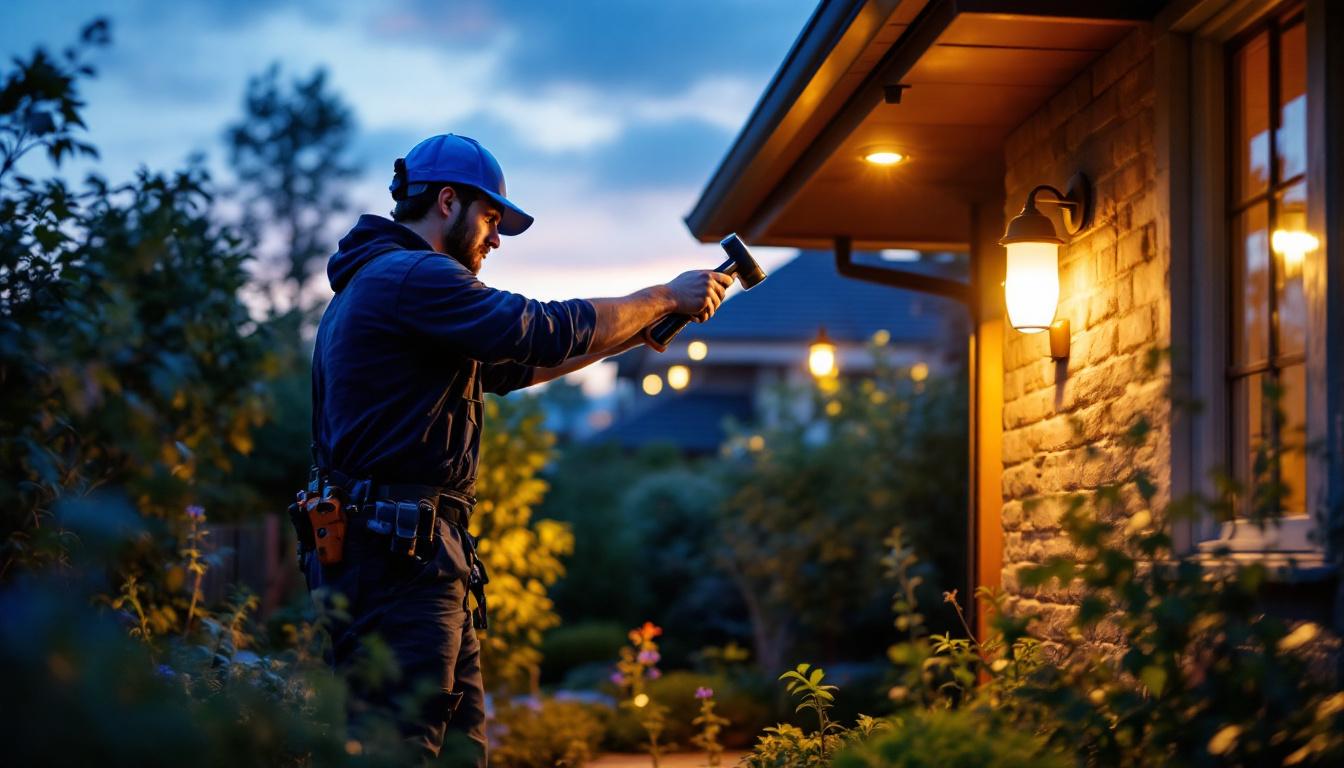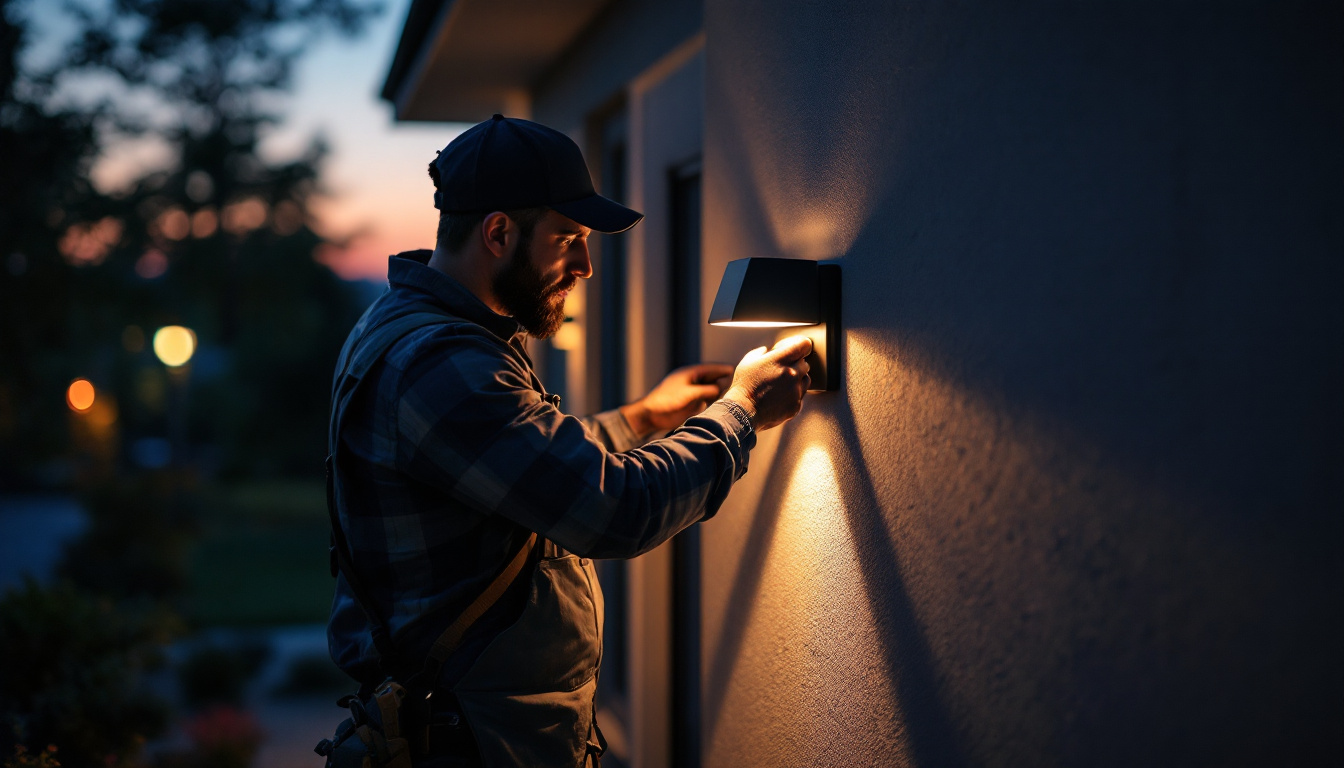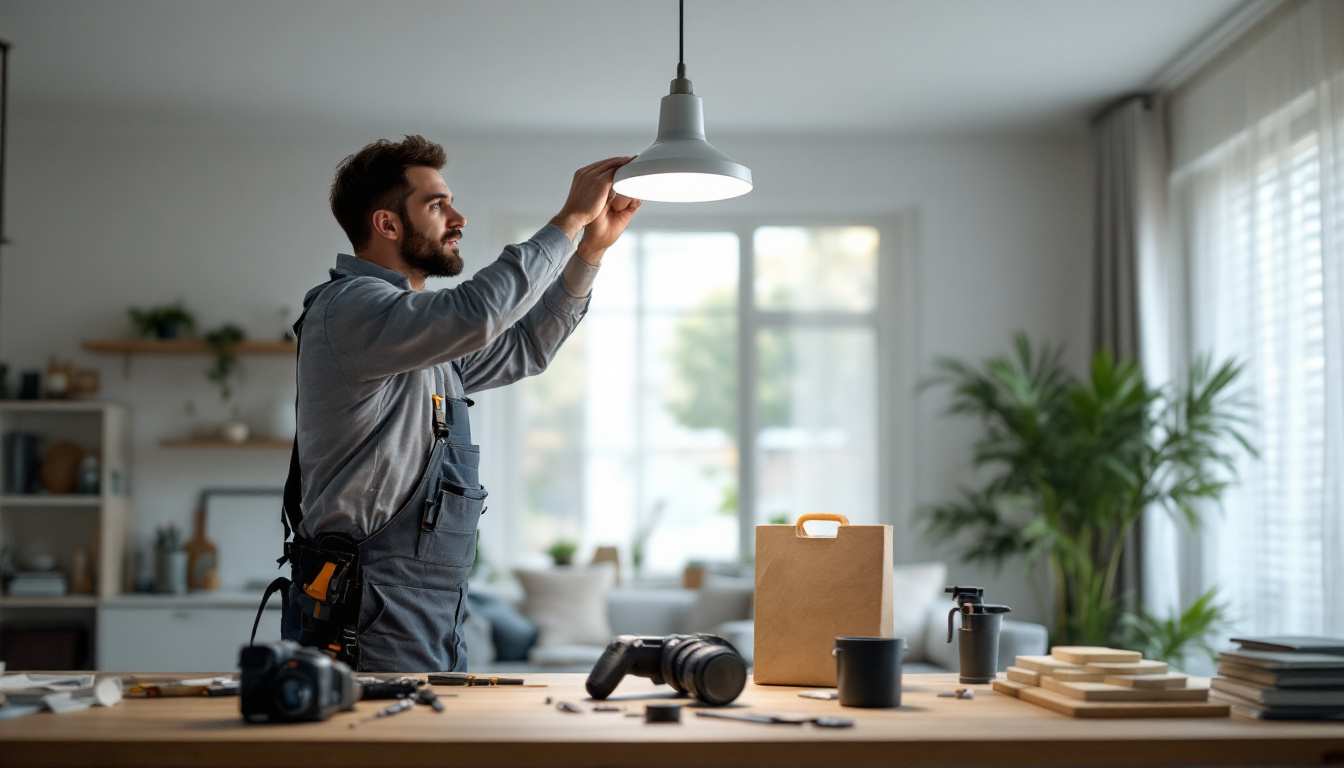
Outdoor lighting is an essential aspect of enhancing the beauty, safety, and functionality of residential and commercial spaces. For lighting contractors, understanding the intricacies of outdoor lighting design and installation is crucial. This checklist serves as a comprehensive guide to ensure that every project is executed flawlessly, meeting both client expectations and industry standards.
The first step in any outdoor lighting project is to thoroughly understand the client’s needs and preferences. This involves a detailed consultation to discuss their vision and requirements.
During the initial consultation, it is vital to ask open-ended questions that encourage clients to express their ideas. Topics to cover include the intended use of the space, preferred lighting styles, and any specific features they wish to highlight, such as pathways, gardens, or architectural elements. Additionally, it can be beneficial to discuss the atmosphere they want to create—whether it be a warm, inviting glow for entertaining guests or a bright, functional light for safety and security. Visual aids, such as mood boards or samples of different lighting types, can also help clients articulate their preferences more clearly.
Discussing budget early on helps set realistic expectations. Clients may have a specific budget in mind, and understanding this can guide the selection of materials and design options. Provide a range of solutions that can fit various budget levels while ensuring quality and aesthetics. It’s also important to educate clients about the long-term value of investing in energy-efficient lighting options, which may have a higher upfront cost but can lead to significant savings on energy bills over time. Offering financing options or phased project implementations can also ease budget concerns and make the project more accessible.
Establishing a timeline is crucial for project management. Discussing the scope of work, including the number of fixtures, types of lighting, and any additional features, helps in creating a realistic schedule. Ensure that both parties agree on deadlines to avoid any misunderstandings later in the project. It’s also wise to account for potential delays due to weather conditions or supply chain issues, which can affect the availability of specific materials. By setting clear milestones and regular check-ins throughout the project, you can keep the client informed and engaged, ensuring that the final result aligns with their vision and expectations.
A thorough site assessment is fundamental to the success of any outdoor lighting project. This step involves evaluating the physical space and identifying potential challenges that may arise during installation.
Take note of existing landscape features such as trees, shrubs, and pathways. Understanding these elements allows for strategic placement of lighting fixtures to enhance the natural beauty of the environment. Consider how different types of lighting can highlight textures and colors in the landscape. For instance, uplighting can create dramatic shadows and emphasize the height of trees, while downlighting can provide a soft glow along pathways, guiding visitors safely through the space. Additionally, consider seasonal changes; certain plants may bloom at different times of the year, and adjusting lighting accordingly can create a dynamic atmosphere that evolves with the seasons.
Before installation, it is essential to assess the existing electrical infrastructure. Determine the location of power sources and evaluate whether they can support the planned lighting design. If necessary, plan for additional electrical work to ensure safety and compliance with local codes. It may also be beneficial to explore energy-efficient options, such as LED fixtures, which not only reduce energy consumption but can also lower long-term operational costs. Furthermore, consider incorporating smart technology that allows for remote control and scheduling of lighting, enhancing both convenience and energy management.
Safety should always be a priority. Identify potential hazards such as uneven ground, water features, or areas with limited visibility. Addressing these concerns in the design phase can prevent accidents and ensure a safe environment for users. For example, installing lighting near water features can enhance aesthetics while also ensuring that pathways are well-lit to prevent slips and falls. Additionally, consider the potential for wildlife interactions; certain lighting types can attract insects, which in turn may attract larger animals. By taking these factors into account, you can create a harmonious balance between safety and the natural ecosystem of the area.
Once the initial consultations and site assessments are complete, the next step is to create a detailed lighting design plan. This plan should reflect the client’s vision while considering practical aspects of installation and maintenance. A comprehensive approach involves not only aesthetic considerations but also an understanding of the environmental impact and sustainability practices that can be incorporated into the design. By aligning the lighting plan with eco-friendly principles, designers can create spaces that are both beautiful and responsible.
Selecting the appropriate lighting fixtures is crucial for achieving the desired effect. Consider factors such as brightness, color temperature, and energy efficiency. LED fixtures are often a preferred choice due to their longevity and low energy consumption. Additionally, the style of the fixtures should complement the overall design theme of the space, whether it’s contemporary, rustic, or traditional. Designers might also explore options like solar-powered lights, which not only reduce electricity costs but also minimize the carbon footprint of the lighting system.
A well-thought-out lighting layout enhances both functionality and aesthetics. Use a combination of ambient, task, and accent lighting to create depth and interest. Ensure that the layout provides adequate illumination for safety while also highlighting key features in the landscape. For instance, strategically placed path lights can guide visitors safely through a garden, while well-placed spotlights can draw attention to architectural elements or beautiful trees. Furthermore, considering the seasonal changes in the landscape can influence the layout, as certain features may become more prominent or require different lighting approaches throughout the year.
Incorporating smart lighting technology can add significant value to outdoor lighting projects. Clients may appreciate features such as remote control, programmable settings, and integration with home automation systems. Discuss these options during the design phase to tailor the project to modern preferences. Smart lighting can also enhance security, as homeowners can program lights to simulate occupancy when they are away, deterring potential intruders. Additionally, incorporating sensors that adjust lighting based on natural light levels can optimize energy use, ensuring that outdoor spaces are well-lit when needed without wasting electricity during daylight hours.
The installation phase is where the planning comes to life. A systematic approach ensures that the project is executed efficiently and meets quality standards.
Before installation begins, prepare the site by clearing any debris and marking the locations for fixtures. This step helps visualize the layout and ensures that all team members are on the same page regarding the design plan.
When it comes to electrical work, safety is paramount. Ensure that all electrical connections are made according to local codes and regulations. Once the electrical work is complete, proceed to install the fixtures, paying attention to alignment and positioning for optimal lighting effects.
After installation, conduct a thorough testing of all lighting fixtures. This step allows for adjustments to be made in terms of brightness, angles, and overall effect. Encourage clients to provide feedback during this phase to ensure their satisfaction with the final outcome.
Once the installation is complete, there are several important considerations to address to ensure the longevity and effectiveness of the outdoor lighting system.
Providing clients with training on how to operate their new lighting system is essential. Explain how to use any smart features, timers, or remote controls. This knowledge empowers clients to make the most of their investment and enhances their overall satisfaction.
Discussing a maintenance schedule is vital for the longevity of the lighting system. Offer clients a plan that includes regular inspections, bulb replacements, and cleaning of fixtures. This proactive approach can prevent issues and ensure that the lighting remains effective over time.
Encouraging feedback after project completion can provide valuable insights for future projects. Follow up with clients to ensure they are satisfied with the installation and address any concerns they may have. This practice not only fosters a positive relationship but can also lead to referrals and repeat business.
Outdoor lighting projects can present unique challenges. Being prepared to address these issues can enhance the overall project experience.
Weather can significantly impact outdoor lighting installations. Rain, wind, and extreme temperatures can delay work and affect the performance of lighting fixtures. Planning for weather contingencies, such as scheduling work during favorable conditions and using weather-resistant materials, can mitigate these challenges.
Sometimes, client expectations may not align with the realities of the project. Clear communication throughout the process is essential to manage these expectations. Providing visual aids, such as renderings or mood boards, can help clients better understand the proposed design and avoid misunderstandings.
Every site comes with its own set of limitations, whether it be space constraints, existing structures, or landscaping features. Being adaptable and creative in finding solutions can lead to innovative designs that meet client needs while overcoming site challenges.
Outdoor lighting is an art that combines functionality, safety, and aesthetics. For lighting contractors, following a structured checklist can streamline the process from initial consultation to post-installation maintenance. By focusing on client needs, conducting thorough assessments, and executing a well-planned design and installation, contractors can deliver exceptional results that enhance outdoor spaces.
Ultimately, successful outdoor lighting projects not only illuminate spaces but also create inviting atmospheres that clients will appreciate for years to come. By adhering to best practices and maintaining open lines of communication, lighting contractors can build lasting relationships with their clients, paving the way for future projects and referrals.
Ready to elevate your outdoor lighting projects with premium quality and unbeatable value? Look no further than LumenWholesale. Our spec-grade lighting products are designed to meet the highest industry standards, ensuring you deliver outstanding results every time. Say goodbye to local distributor markups and hello to superior lighting at wholesale prices. Plus, with free shipping on bulk orders, you can enjoy the convenience and savings that come with hassle-free purchasing. Don’t compromise on quality or cost. Wholesale Lighting at the Best Value is just a click away. Transform your outdoor lighting projects with LumenWholesale today.

Discover the impact of outdoor wall-mounted LED lights on modern lighting projects.

Discover essential tips and common pitfalls for lighting contractors working with 6-inch LED can lights.

Discover essential tips and strategies for lighting contractors to prevent common pitfalls when using laptops on the job.

Discover why staying updated on light levels is crucial for every lighting contractor.